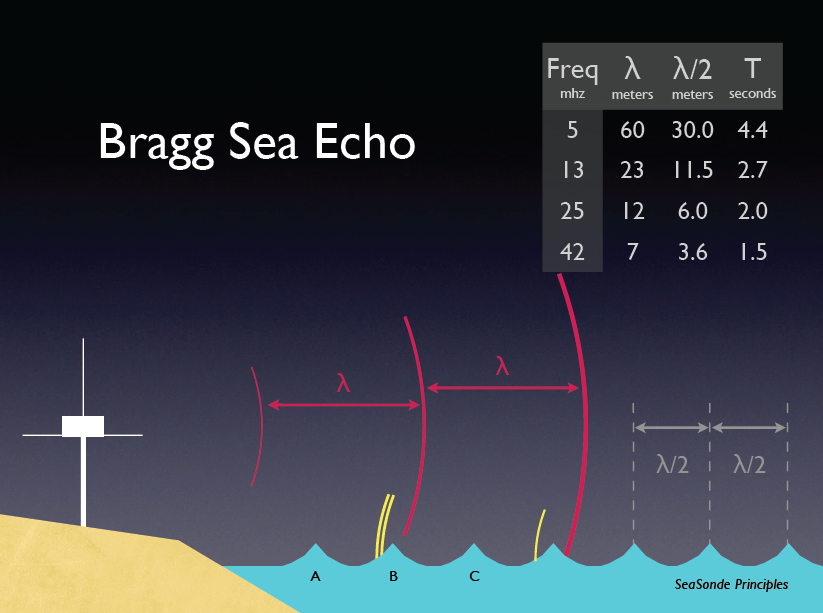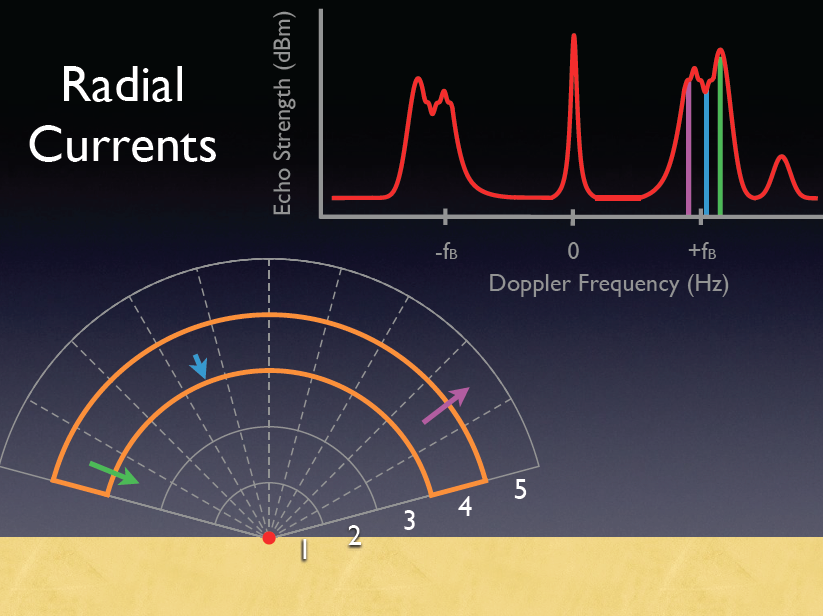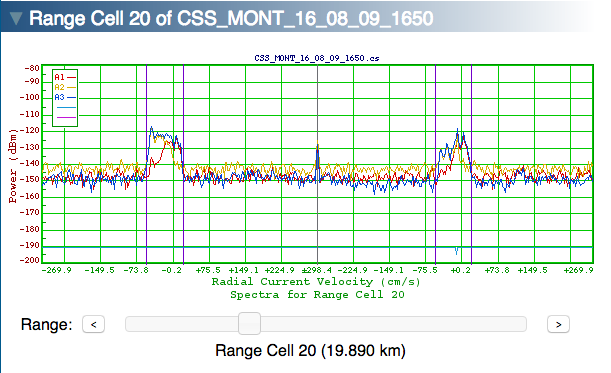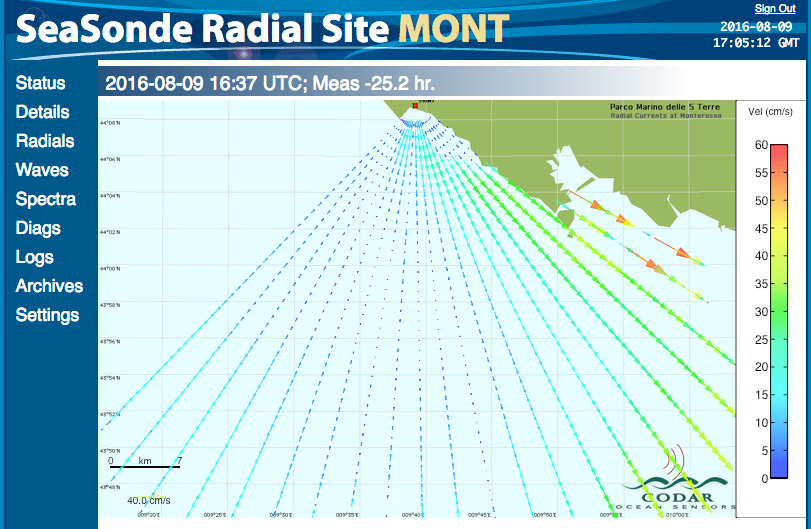HF Radar theoretical principles
HF (high frequency) radars are very powerful instruments able to provide maps of surface velocity in extensive regions of the sea (range up to 200km) and at time intervals typically of an hour. They are therefore very well suited for continuous monitoring of surface ocean currents. The rough sea surface can act like a large diffraction grating (see picture below).

Only when the radar signal scatters off a wave that is exactly half the transmitted signal wavelength, AND that wave is traveling in a radial path either directly away from or towards the radar, the radar signal will return directly to its source. The scattered radar electromagnetic waves add coherently resulting in a strong return of energy at a very precise wavelength. The returning signal exhibits a Doppler-frequency shift. In the absence of ocean currents, the Doppler frequency shift would always arrive at a known position in the frequency spectrum.

But the observed Doppler-frequency shift does not match up exactly with the theoretical wave speed. The Doppler-frequency shift includes the theoretical speed of wave PLUS the influence of the underlying ocean current on the wave velocity in a radial path.

Echo strenght Vs Doppler Frequency at range cell 20

Radial Map produced by a single HF radar station. Radials measured in the same area by two or more HF radars are combined to obtain 2-D velocity fields